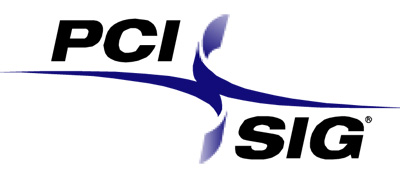AMD's Radeon HD 6990: The New Single Card King
by Ryan Smith on March 8, 2011 12:01 AM EST- Posted in
- AMD
- Radeon HD 6990
- GPUs
PCI-Express Compliance: Does It Even Matter?
For a while now we’ve been under the impression that video card size and power consumption was ultimately capped by the PCI-Express specification. At present time the specification and its addendums specify normal (75W), 150W, 225W, and 300W PCIe card operation. In the case of 300W cards in particular this is achieved through 75W from the PCIe slot, 75W from a 6pin PCIe power connector, and 150W from an 8pin PCIe power connector. As the name implies, the PCIe specification also defines what the 6pin and 8pin power connectors are supposed to be capable of, which is where 75W and 150W come from respectively.
Altogether the biggest, most powerful card configuration in the PCIe specification allows for a 12.283” long, triple-wide card that consumes 300W. To date we’ve never seen a card exceed the physical specifications, but we’ve seen several cards exceed the electrical specifications. This includes cards such as the 5970 and some overclocking-oriented 5870s that were designed to handle more than 300W when overclocked, and even more exotic cards such as the Asus ARES 5870X2 that simply drew more than 300W from the get-go. We have yet to see a reference design from AMD/NVIDIA however that exceeds any part of the PCIe specification by default.

So it has been clear for some time now that cards can exceed the PCIe specifications without incurring the immediately wrath of an army of lawyers, but at the same time this doesn’t establish what the benefits or losses are of being or not being PCIe compliant. To have a reference design exceed the PCIe specifications is certainly a new mark for the GPU industry, so we decided to get right to the bottom of the matter and get an answer to the following question: does PCI-Express compliance matter?
To answer this question we went to two parties. The first of which was of course AMD, whose product is in question. AMD’s answer basically amounts to a polite deflection: it’s an ultra-enthusiast card that at default settings does not exceed the power available by the combination of the PCIe slot and PCIe power connectors. Furthermore, as they correctly note, the 6990 is not the first card to ship at over 300W, as the ARES and other cards were drawing more than 300W a year ago. It’s a polite answer that glosses over the fact that no, the 6990 isn’t technically PCIe compliant.
To get a second opinion on the matter we went straight to the source: The Peripheral Component Interconnect Special Interest Group (PCI-SIG), which is the industry group that defines the PCIe standard and runs the workshops that test for product compliance. The PCI-SIG’s member list is virtually everyone in the computing industry, including AMD, NVIDIA, and Intel, so everyone has some level of representation with the group.

So what does the PCI-SIG think about cards such as the 6990 which exceed the PCIe specification? In a nutshell, they don’t directly care. The group’s working philosophy is closer to approving cards that work than it is about strictly enforcing standards, so their direct interest in the matter is limited. The holy grail of the PCI-SIG is the PCI Express Integrators List, which lists all the motherboards and add-on cards that have passed compliance testing. The principal purpose of the list is to help OEMs and system integrators choose hardware, relying on the list and by extension PCI-SIG testing to confirm that the product meets the PCIe standards, so that they can be sure it will work in their systems.
The Integrators List is more or less exclusively OEM focused, which means it has little significance for niche products such as the 6990 which is split between end-user installation and highly customized OEM builds. The 6990 does not need to be on the list to be sold to its target market. Similarly the 5970 was never submitted/approved for listing, and we wouldn’t expect the 6990 to be submitted either.
It is worth noting however that while the PCI-SIG does have power specifications, they’re not a principal concern of the group and they want to avoid doing anything that would limit product innovation. While the 300W specification was laid out under the belief that a further specification would not be necessary, the PCI-SIG does not even test for power specification compliance under their current compliance testing procedures. Conceivably the 6990 could be submitted and could pass the test, leading to it being labeled PCIe compliant. Of course it’s equally conceivable that the PCI-SIG could start doing power compliance testing if it became an issue…
At the end of the day as the PCI-SIG is a pro-compliance organization as opposed to being a standard-enforcement organization, there’s little to lose for AMD or their partners by not being compliant with the PCIe power specifications. By not having passed compliance testing the only “penalty” for AMD is that they cannot claim the 6990 is PCIe compliant; funny enough they can even use the PCIe logo (we’ve already seen a Sapphire 6990 box with it). So does PCIe compliance matter? For mainstream products PCIe compliance matters for the purposes of getting OEM sales; for everything else including niche products like the 6990, PCIe compliance does not matter.










130 Comments
View All Comments
Figaro56 - Tuesday, March 8, 2011 - link
Just be prepared to upgrade your GPU every year. If you think they are going to stop leap frogging performance you are not being realistic.san1s - Tuesday, March 8, 2011 - link
"AMD even went so far as to suggest that reviewers not directly disassemble their 6990"The next picture: The card disassembled
haha
Ryan Smith - Tuesday, March 8, 2011 - link
To AMD's credit, they were good sports offered to take any pictures we needed. So all of those disassembled shots came from them. They were really adamant about it being a bad idea to take these things apart if you intended to use them in the future.strikeback03 - Tuesday, March 8, 2011 - link
I was looking for a comment on whether you did all your testing before disassembling or whether you got some of their super paste to reassemble.7Enigma - Tuesday, March 8, 2011 - link
My problem with the shot is the poor application of thermal paste from the picture. In a card of this magnitude having a perfect coating of thermal compound is critical. And knowing marketing if that is the shot they SHOW, how good do you really think the application is on one purchased in retail channels?iwod - Tuesday, March 8, 2011 - link
I haven't been following CrossFire / SLI or these Single Card Dual GPU closely. ( Which to me are the same as two card anyway )Do they still need drivers to have a specific profile of the game to take advantage? I.e an Unknown Game to the Drivers will gain 0 benefits from the 2nd GPU?
If that is so, then they are not even worth a look.
Figaro56 - Tuesday, March 8, 2011 - link
Most of the big games support SLI and CrossfireX today. For example, I play Battlefield BC2 myself and using 2 video cards blows the doors of a single card and is well worth the investment, especially if you have a 2560x1600 resolution monitor like I do. For 2 ATI cards in Crossfire you install a separate crossfire profiles pack in addition to the catalyst drivers. The profiles pack supports all the game crossfire optimization. The AI mode in the catalyst drivers exploits the game profile pack setting for crossfire so you want that enabled.A dual GPU HD 6990 is essentially crossfire on a single card, but for some reason it doesn't perform as well as dual single GPU cards in crossfire. Go figure.
If you play old games that don't support SLI or Crossfire then YES there is 0 gain. If you have not tried any of the new games what are you waiting for? It doesn't suck you know?!
cactusdog - Tuesday, March 8, 2011 - link
I agree, unless you have eyefinity and one slot, paying a premium for heat and noise doesnt make sense. For most people with 1 screen a 6970 or 580 is more than enough.Samus - Tuesday, March 8, 2011 - link
i'd be shocked if they sold even one of these without it being returned at some point. the noise levels are astonishing. at full blast the thing doesn't even meet federal vehicle emissions noise regulations without being classified as a motorcycle!MadAd - Tuesday, March 8, 2011 - link
8%? where do we buy tubes of this phase change material? do they sell it like arctic silver?